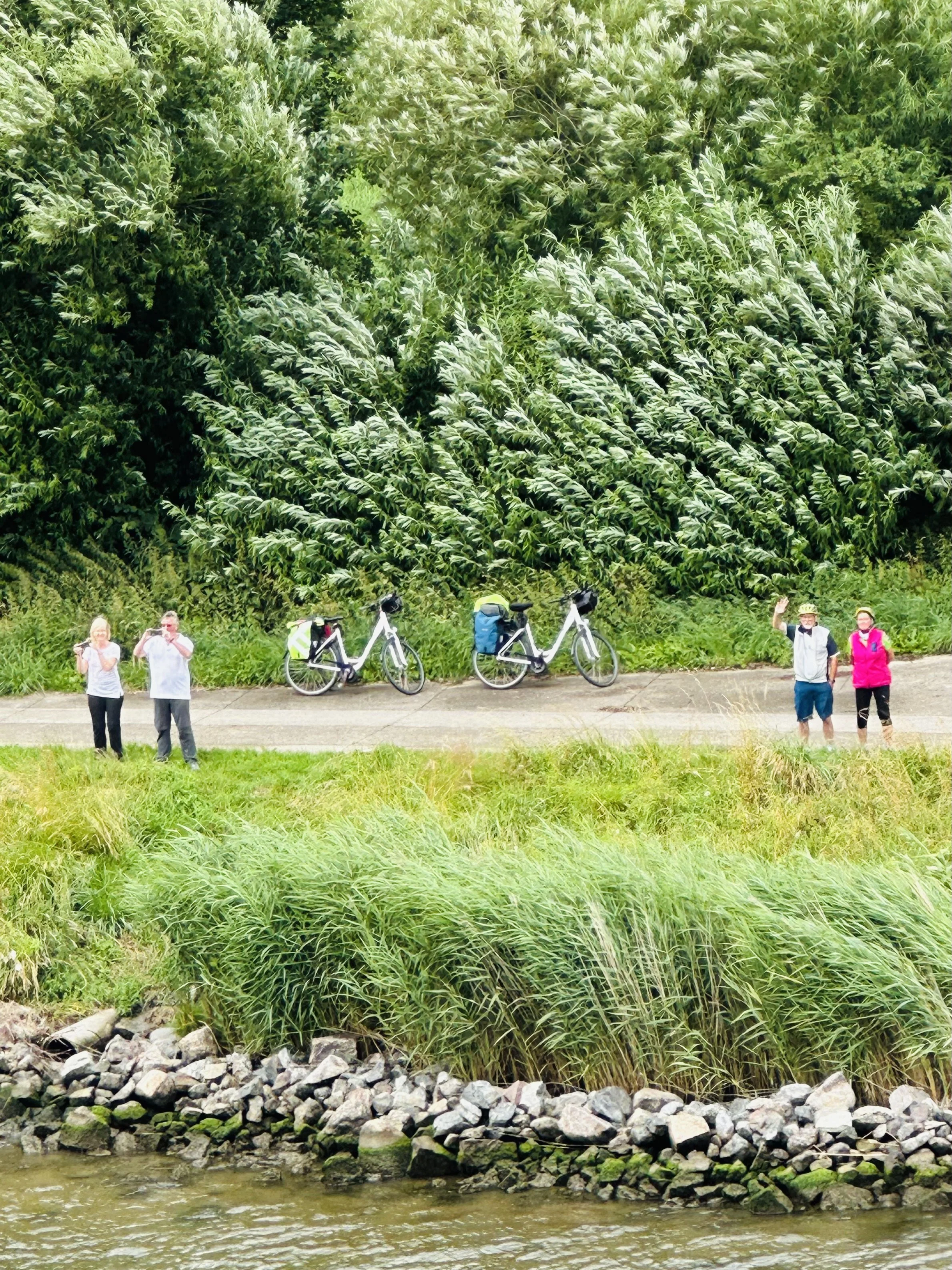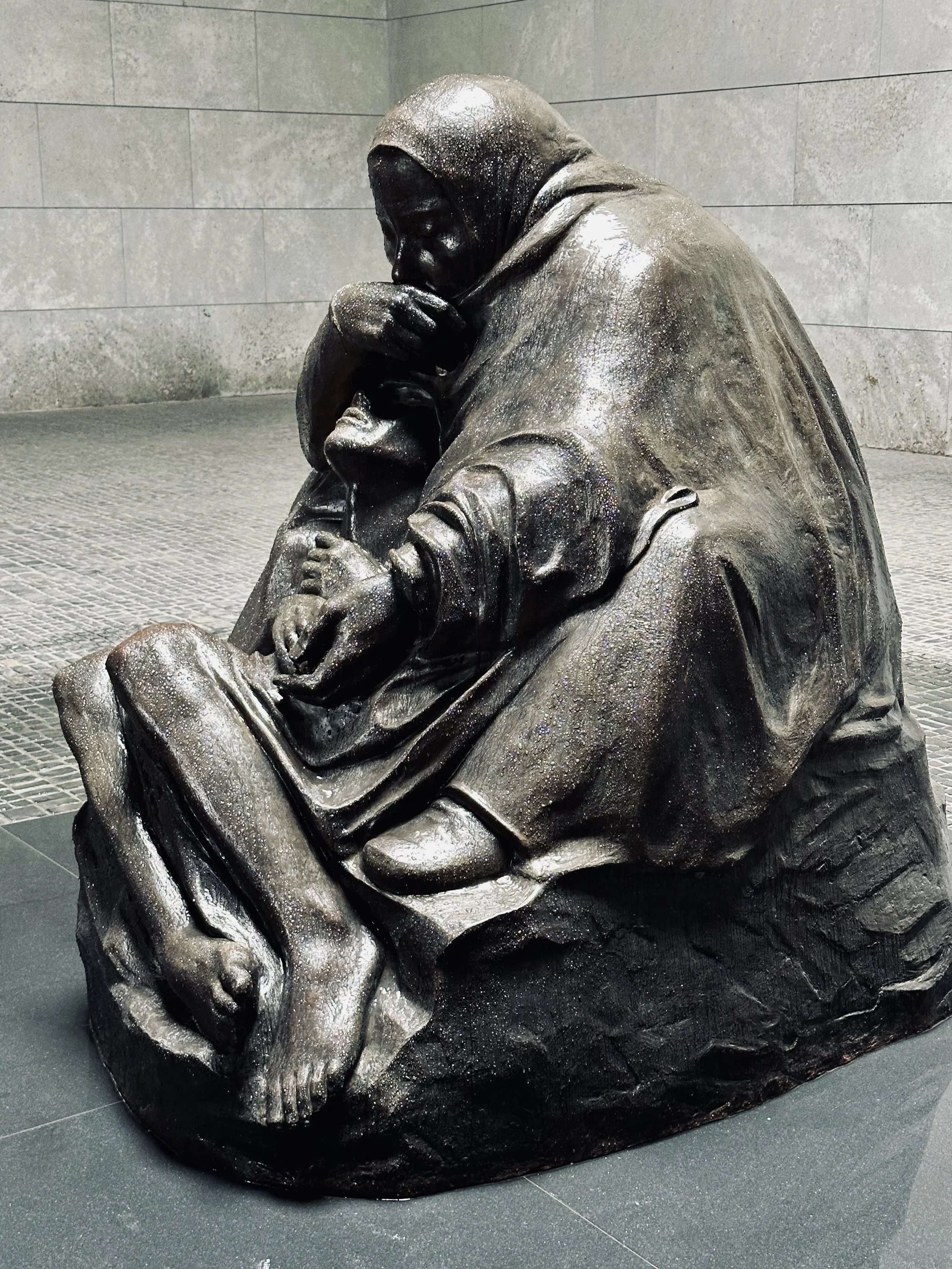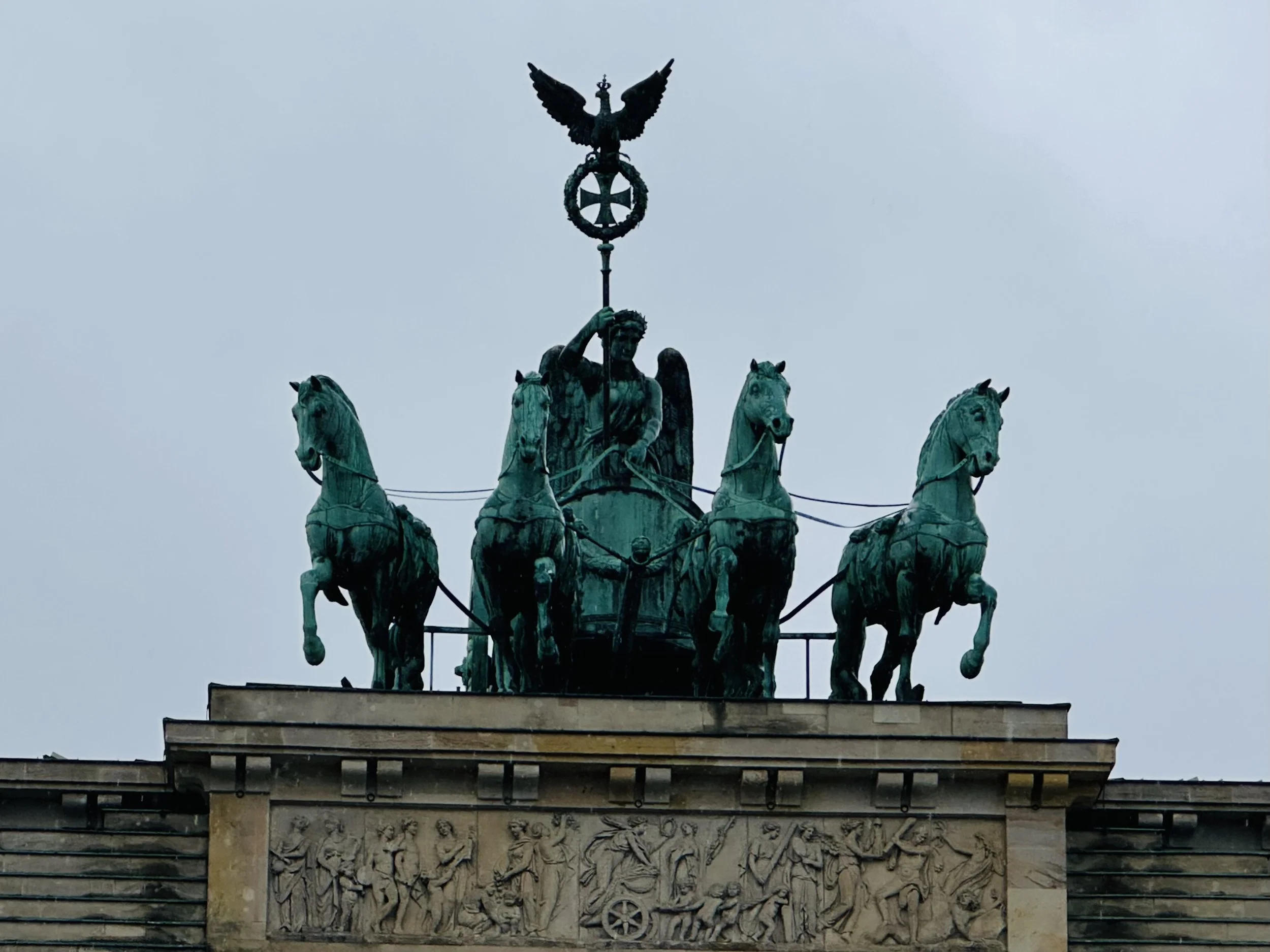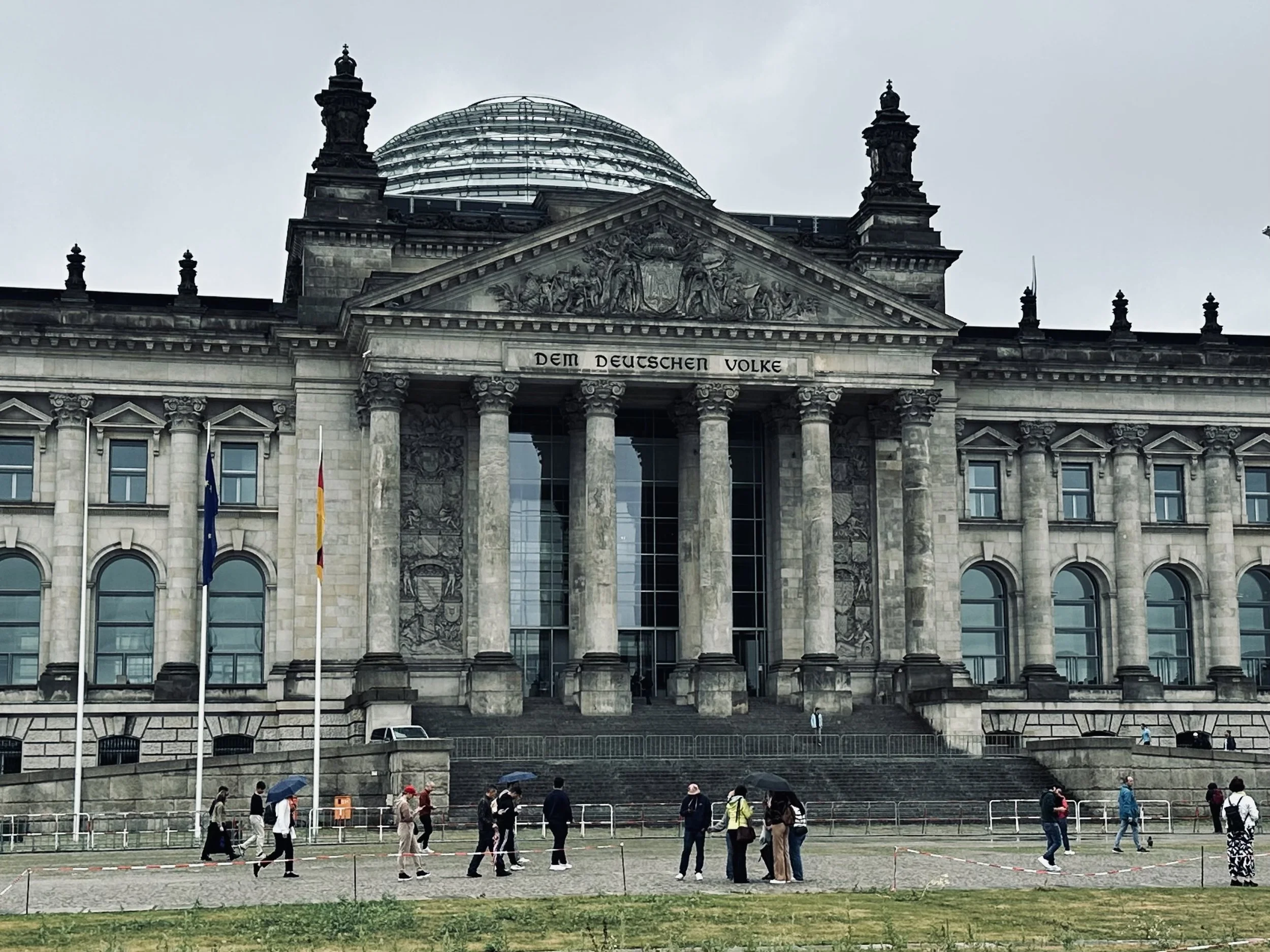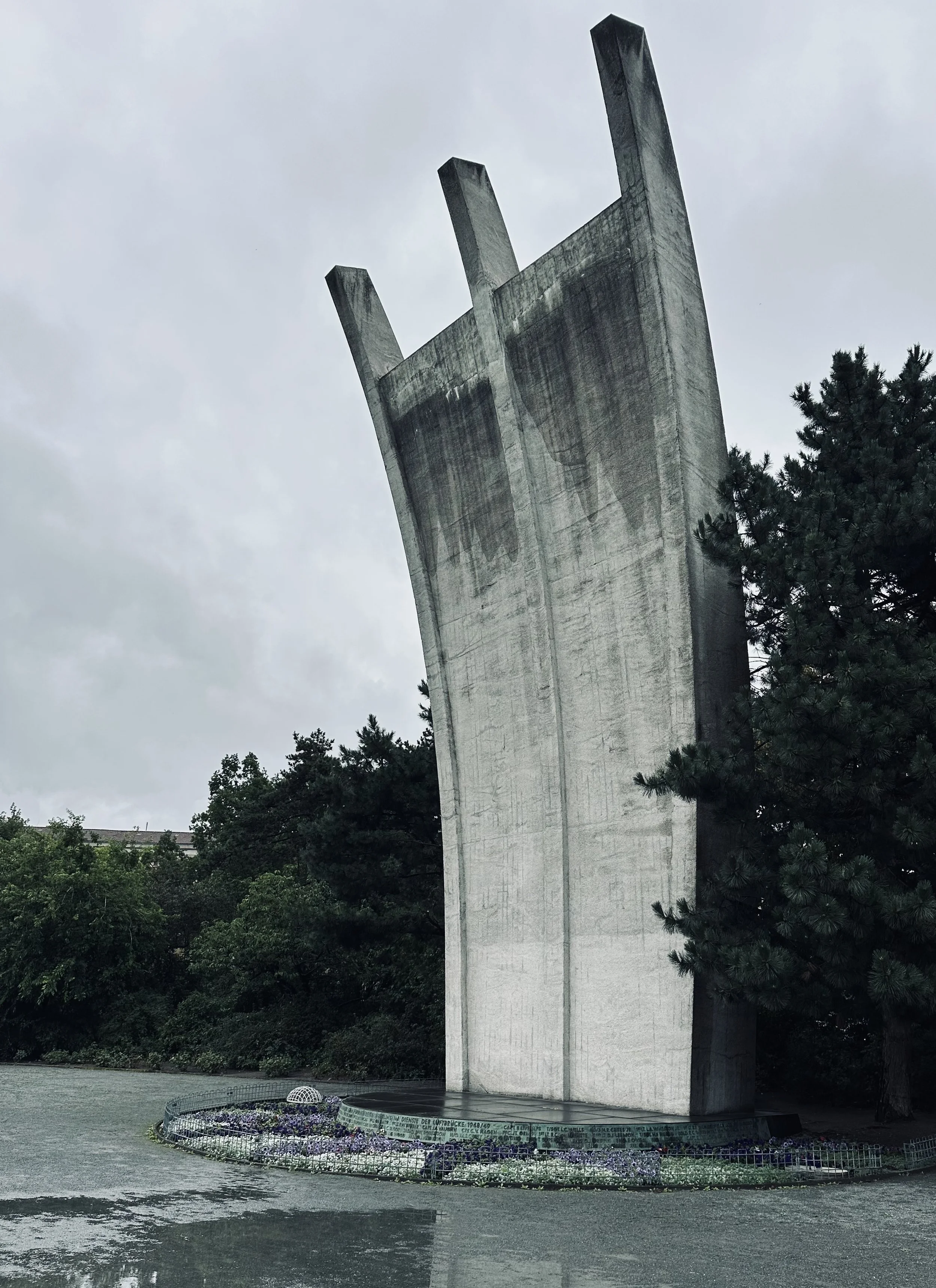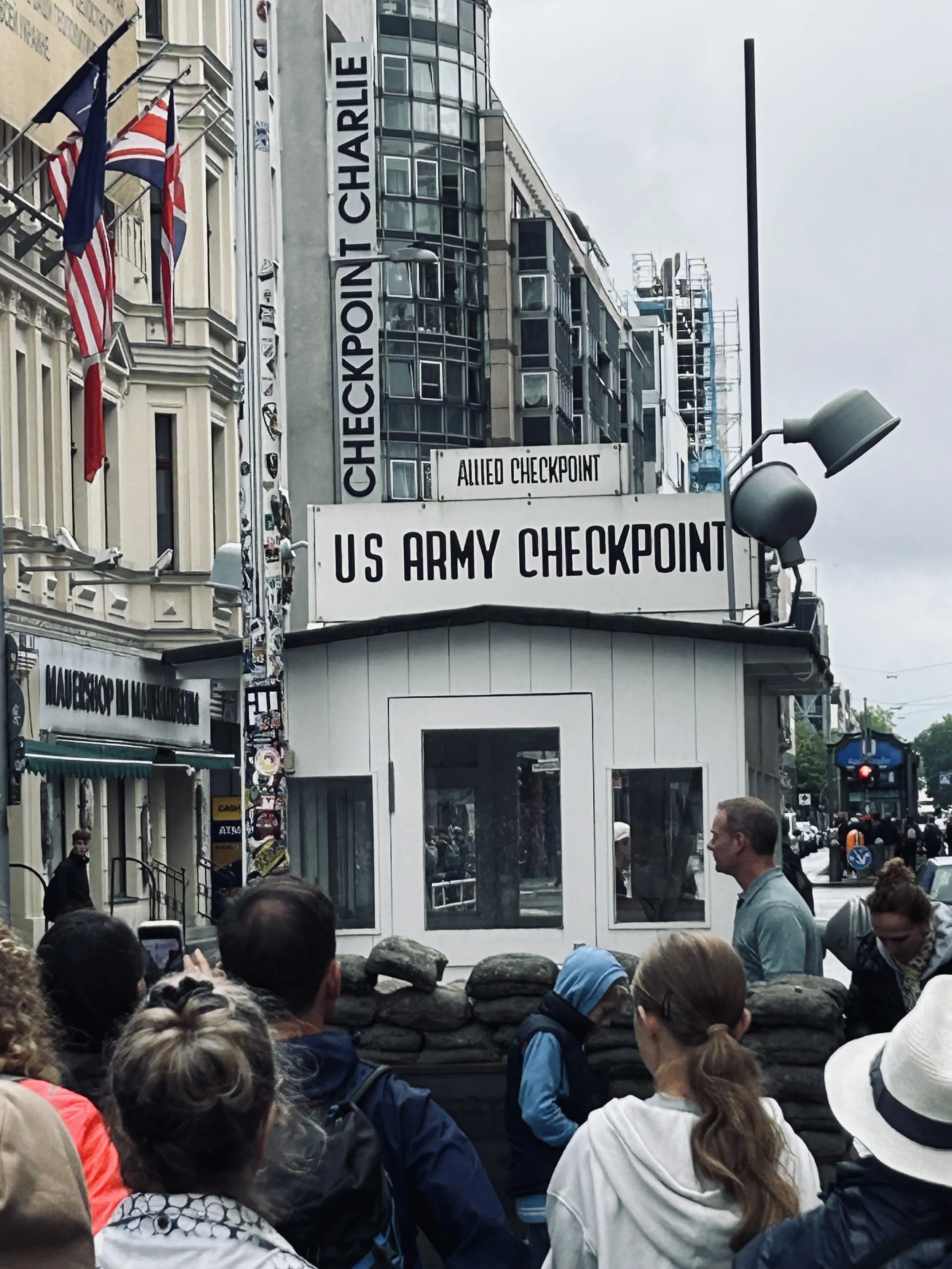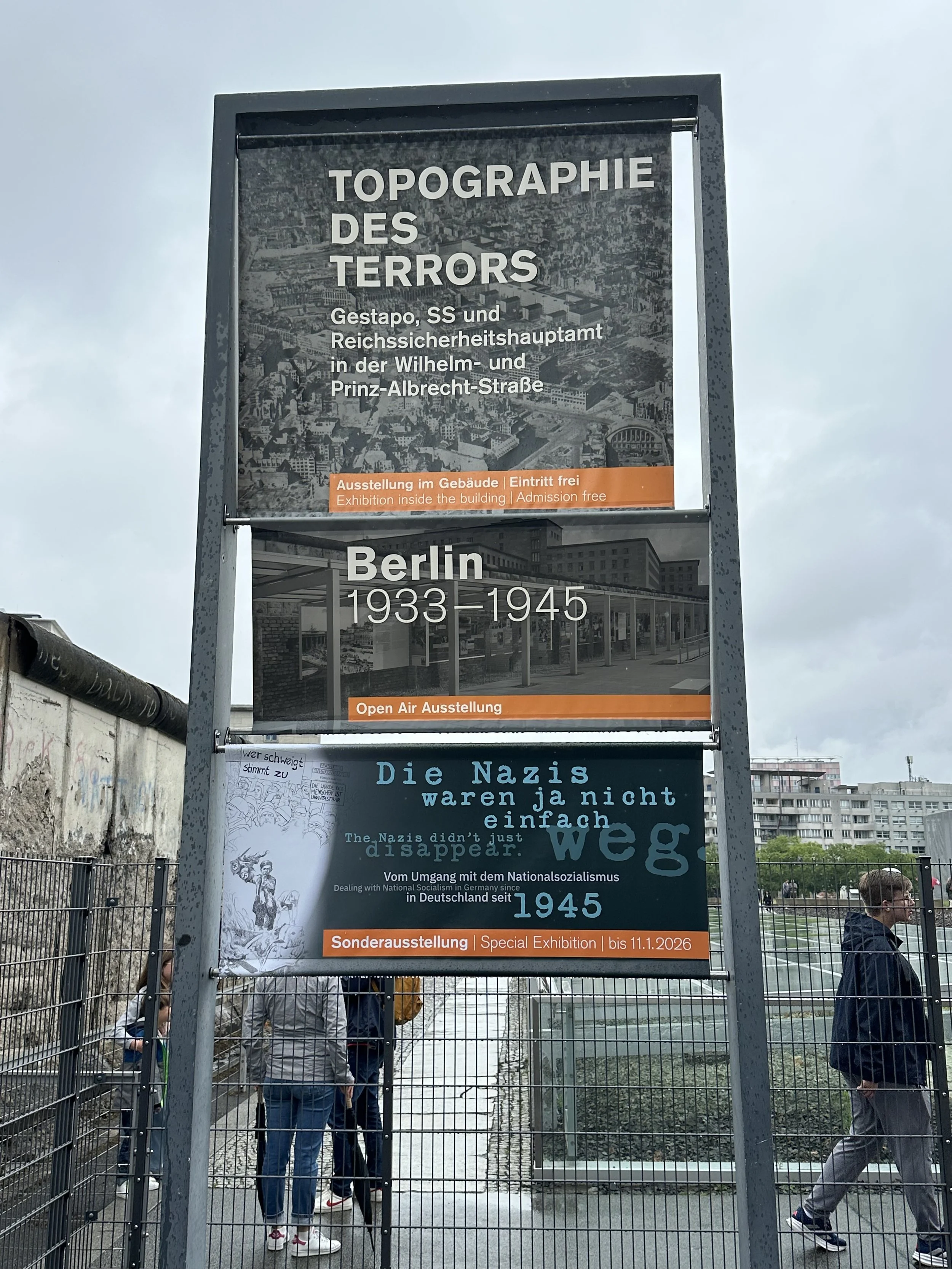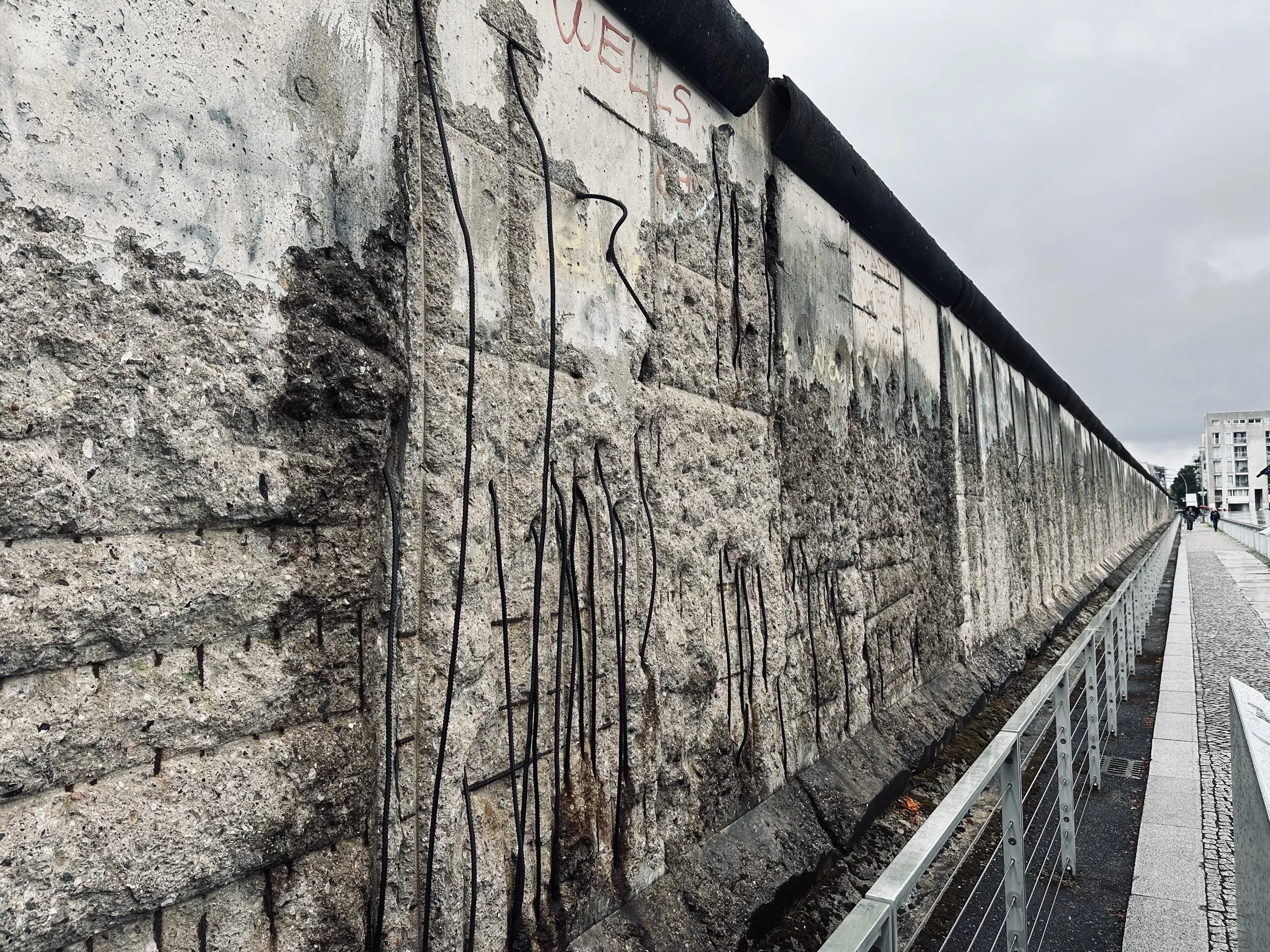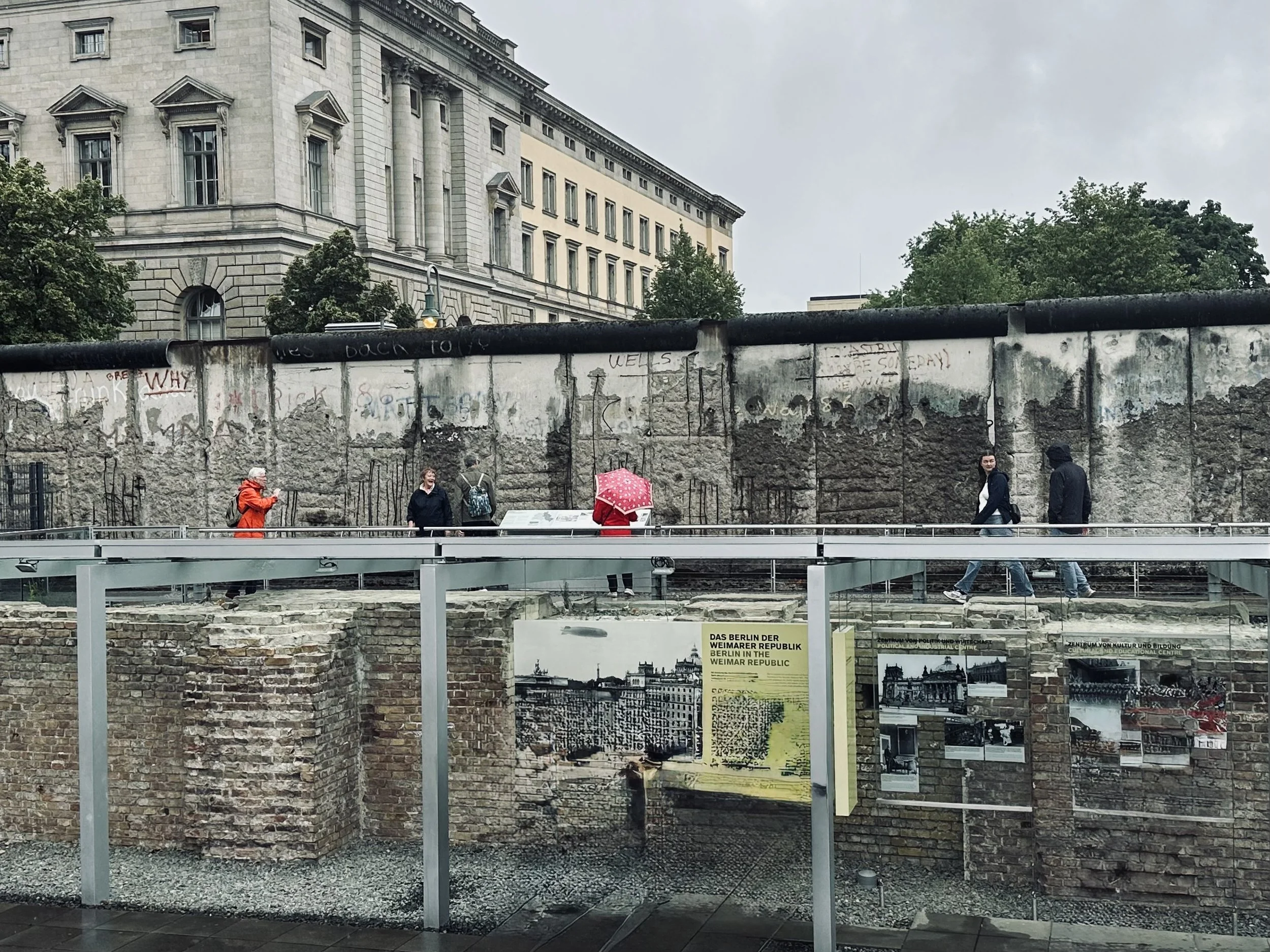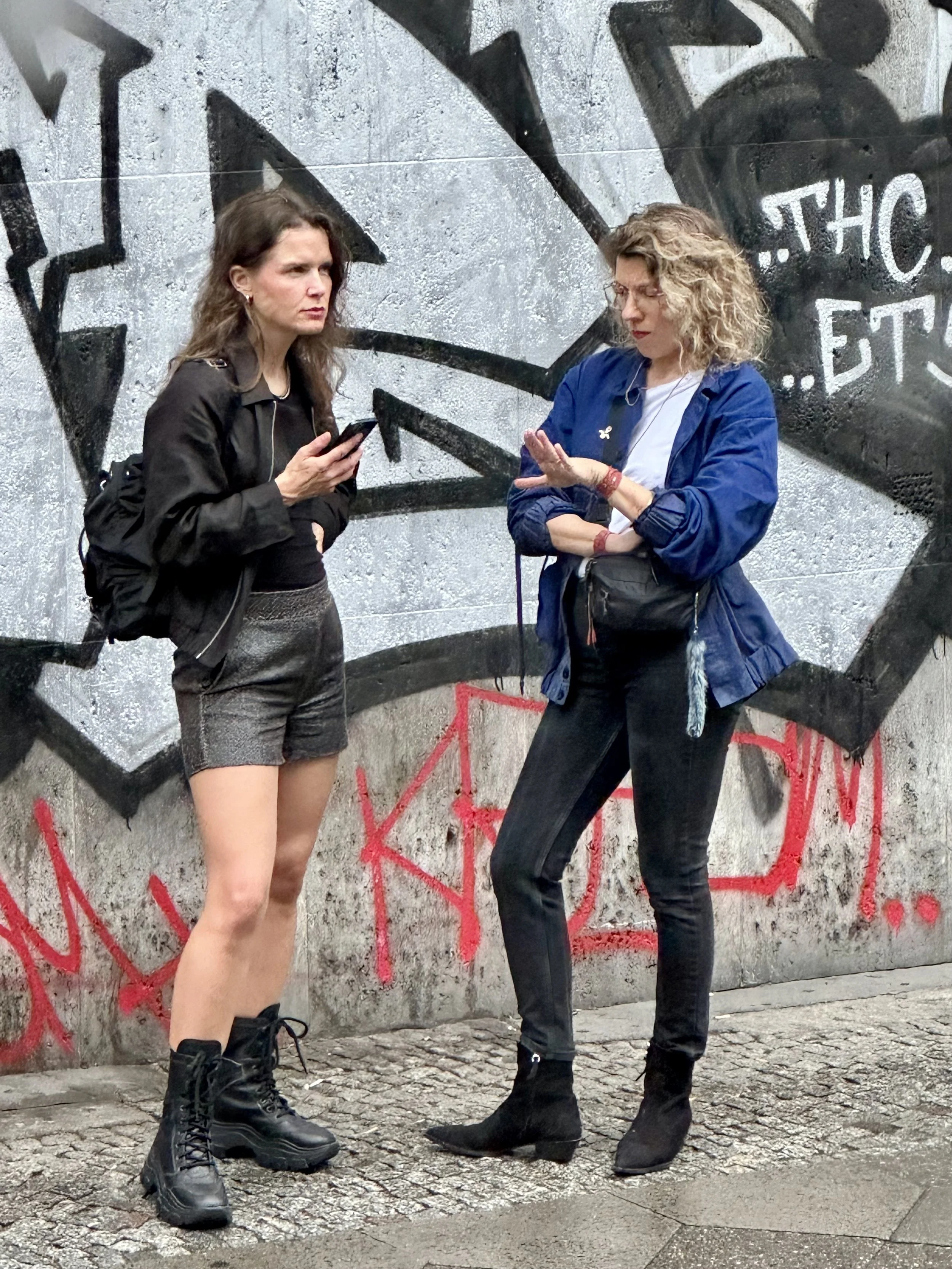Berlin and Kiel Canal
Sunday, July 13, 2025
Sailing thru the Kiel Canal
The Canal is a crucial shortcut between the North Sea and the Baltic, cutting 250 miles off the journey around the Jutland Peninsula . Since 1895, the Kiel Canal, a marvel of German engineering and determination, is the world’s busiest waterway. It handles 32,000 ships annually—about 90 per day, transports over 100 million tons of goods a year and has more traffic than the Panama or Suez Canals, though with smaller vessels. It takes our ship approx. nine hours to slowly make our way thru this beautiful passage lined with lush greenery, bucolic fields and villages. Local folks stopped to admire our ship and give a friendly wave!
One July 12, we learned about Berlin and its dramatic history. The gray rainy skies set the mood for monuments, sculptures, historic buildings and symbols of the horrible toll of war. We also heard inspiring stories of heroic American and Allied forces helping to achieve peace; assist suffering East Berliners by dropping food and supplies in the Berlin Airlift, and ultimately tearing down the ugly divisive wall.
Berlin became the capital of Nazi Germany under Adolf Hitler. It was his brutal regime’s political and propaganda home base, scene of massive rallies, the Gestapo, and the horrific Holocaust. The city was heavily bombed during WWII, and the Battle of Berlin in 1945 marked the final collapse of the Third Reich. After WWII, Berlin was split into four sectors controlled by the Allies: the U.S., UK, France, and the Soviet Union. Tensions between East and West escalated, and in 1961, the Berlin Wall was built to stop East Germans from fleeing to the West. The wall became a stark symbol of the Cold War, dividing families and ideologies, marked with tragic attempts to cross the wall.
In 1989, mass protests and political shifts led to the fall of the Berlin Wall. By 1990, East and West Germany were reunited, and Berlin was restored as the capital. Today, Berlin welcomes visitors to honor the victims of the terrible past and celebrate freedom as a transformed, vibrant city complete with traffic, graffiti and consumerism.
A solemn sculpture of a mother holding her dead son.
The Brandenburg gate, an iconic symbol of Berlin.
The Reichstag building in Berlin, originally built between 1884 and 1894 to house the parliament of the German Empire. The inscription on the façade: Dem Deutschen Volke ,“To the German People”. After reunification in 1990, it was restored and became the seat of the Bundestag, Germany’s federal parliament. The striking glass dome symbolizes transparency in government, offers panoramic views of Berlin and a glimpse into the parliamentary chamber below. 1995, artists Christo and Jeanne-Claude famously wrapped the entire building in fabric, turning it into a temporary art installation viewed by millions.
Monument to the Berlin Airlift, was one of the most dramatic humanitarian and logistical efforts of the 20th century. With 2.1 million people cut off from food, fuel, and supplies, the Western Allies launched an unprecedented airlift in 1948-49, flying supplies into Tempelhof Airport. Aircraft landed every 2–3 minutes, delivering essentials. At its peak, planes landed every 63 seconds, and over 2.3 million tons of cargo were flown in.
Checkpoint Charlie was the most famous border crossing between East and West Berlin during the Cold War. It became a powerful symbol of the division between communism and democracy, and its legacy still echoes through Berlin’s streets.
Topography of Terror is where the headquarters of the Nazi apparatus was between 1933 - 1945. It was established to inform visitors about Nazi history and crimes that were planned and executed here.
The solemn Memorial to the Murdered Jews of Europe, a fitting tribute to an estimated 6 million World War II victims; men, women and children. The Nazi regime wiped out approximately two-thirds of the Jewish population in Europe. No two granite rectangles are the same and the ground is wavered and uneven - a very powerful symbol. We agree the Holocaust must never be forgotten.
